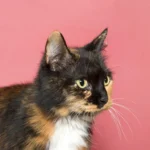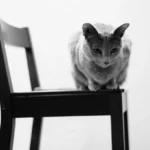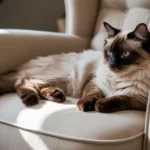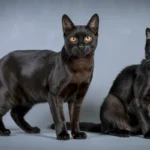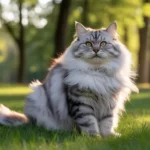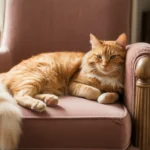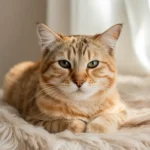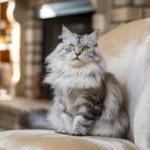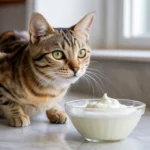Diluted Tortie Cat: Appearance, Personality, and Care Guide
Have you ever come across a cat whose fur looks like soft watercolor shades of gray, cream, and blue? That’s the charm of a Diluted Tortie Cat — a lighter, dreamier version of the classic tortoiseshell. As a lifelong cat lover and pet care blogger, I’ve met many unique felines, but few are as striking or misunderstood as the diluted tortie.
In this guide, I’ll walk you through everything about these stunning cats — from their genetics and coat color to their personality, care needs, and even a real-life case study that shows just how special they can be.
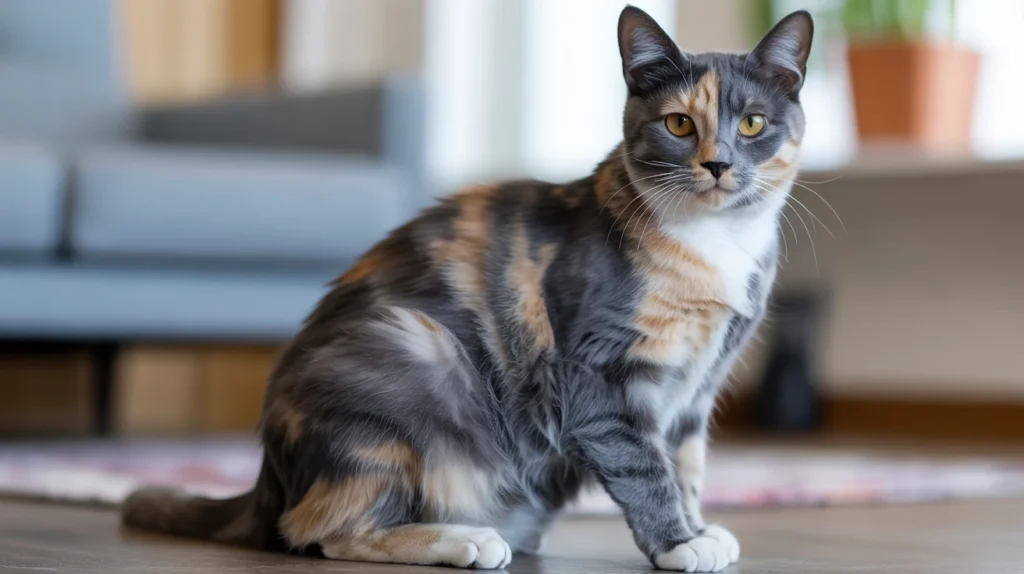
Content
What Is a Diluted Tortie Cat?
A diluted tortie cat, short for diluted tortoiseshell, is not a breed but a color pattern caused by a specific genetic variation. In simple terms, “dilution” means the strong black and orange patches of a regular tortie are softened into blue-gray and cream tones.
This happens due to a recessive dilution gene (MLPH), which lightens the pigmentation in each hair shaft. The result? A misty, pastel-like coat that looks almost painted. You’ll often hear people describe them as blue cream torties because of these muted hues.
It’s important to note that most diluted tortie cats are female, since the coat pattern is linked to the X chromosome. Males do exist, but they’re extremely rare — usually born with an extra X chromosome (XXY), a condition known as Klinefelter’s syndrome.
Interesting Facts About Diluted Tortie Cats
Let’s explore some fun and little-known facts that make these cats so intriguing.
1. Diluted Tortie Isn’t a Breed
Many people assume “diluted tortie” refers to a cat breed, but it doesn’t. You’ll find this color pattern in several breeds like the British Shorthair, Maine Coon, Persian, and even Domestic Shorthair cats.
So if you meet a Domestic Shorthair dilute tortie, she’s not defined by her breed but by her one-of-a-kind coat.
2. Male Diluted Torties Are Exceptionally Rare
Only about 1 in 3,000 tortoiseshell cats are male. And because they have an abnormal chromosome set, most are sterile. This makes male diluted torties a rare genetic marvel.
3. They Have Distinct “Tortitude”
Like their tortoiseshell counterparts, diluted torties are famous for their strong personalities — often playful, vocal, and affectionate yet a bit sassy. Cat owners fondly call this behavior “tortitude.”
However, because the dilution gene affects only coat color and not behavior, a diluted tortie cat’s personality can range from calm and cuddly to bold and independent. Every one of them is truly unique.
4. They Differ From Calico Cats
At first glance, people often confuse diluted torties with diluted calico cats. The key difference?
- Torties have their colors blended or mottled together.
- Calicos display distinct color patches with some white areas.
If your cat looks like a swirl of gray and cream without large white patches, she’s a diluted tortie, not a calico.
5. They Can Be Expensive — but Adoption Is a Great Option
A diluted tortie cat’s cost can vary depending on the breed and breeder. Purebred varieties like Maine Coons or Persians with diluted coats may cost anywhere from $400 to $2,000. However, you can often find them in shelters or rescues for adoption fees as low as $50 to $150 — a small price for such beauty.
Temperament and Personality Traits
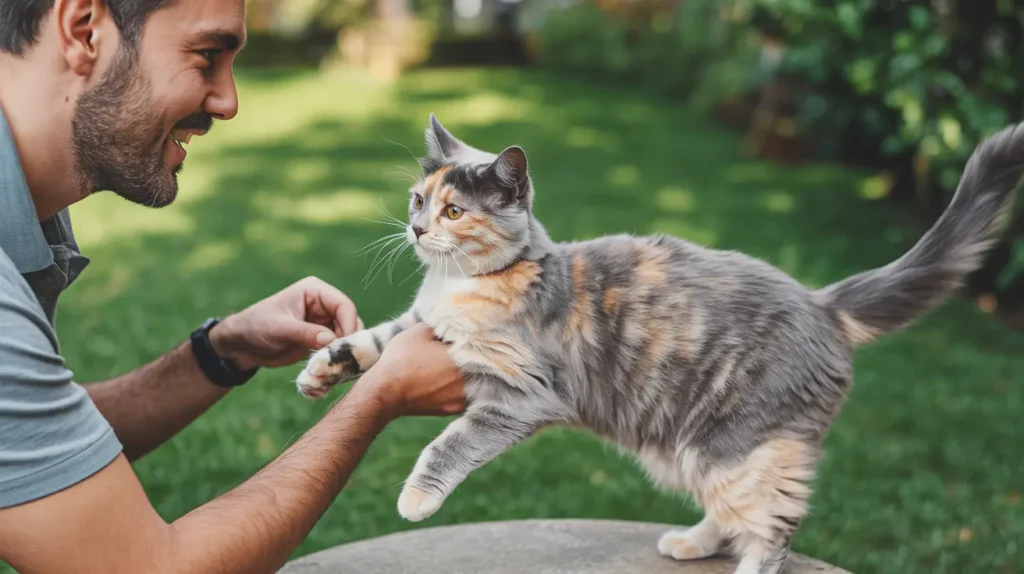
Living with a diluted tortoiseshell cat means having a cat with personality to spare. Most owners describe them as loyal companions who thrive on attention and interaction.
From my own experience working with feline owners, diluted torties tend to be:
- Affectionate, especially with people they trust
- Curious and quick to explore new spaces
- Expressive, often “talking” through chirps and trills
- Independent, enjoying occasional alone time
One thing I’ve learned — you can’t predict a diluted tortie’s behavior just from her looks. Some are lap-loving sweethearts; others run the household like queens!
Real-Life Case Study: Luna, the Diluted Tortie with “Tortitude”
A few years ago, a reader named Melissa shared her experience with Luna, her rescued diluted tortie cat. Luna was shy at first, hiding under the couch for days after arriving home. But within a month, she transformed into the most affectionate cat in the family.
Melissa noticed Luna had a quirky habit: she would “talk back” whenever someone said her name. She wasn’t aggressive but had strong preferences — only certain toys, a favorite sunny spot, and a soft blanket she refused to share with the family dog.
Her story perfectly captures what makes diluted tortie cats so lovable: confident, intelligent, and full of personality once they trust you.
How to Care for a Diluted Tortie Cat
Even though their coats look sophisticated, diluted torties don’t require special grooming beyond basic care. Here are some expert tips:
1. Groom Regularly
Brush once or twice a week to reduce shedding and maintain the coat’s silky texture. For long-haired breeds, daily grooming may be ideal.
2. Provide a Balanced Diet
Feed high-quality cat food rich in protein and omega-3 fatty acids to keep their coat shiny and skin healthy.
3. Routine Vet Visits
Because of their potential genetic variations, especially in male diluted torties, regular vet checkups are vital to ensure early detection of any health issues.
4. Enrichment & Play
These cats love mental stimulation — interactive toys, window perches, and puzzle feeders help them stay engaged.
5. Emotional Care
Every diluted tortie cat thrives on affection and positive reinforcement. Reward calm, loving behavior with gentle petting or treats.
Health and Lifespan
A healthy diluted tortoiseshell cat typically lives between 12 to 16 years or longer with proper care. They don’t have health problems tied directly to coat color, though male diluted torties (XXY) can face reproductive or developmental issues.
Common health checks should include:
- Weight management
- Dental health
- Heart and joint screening as they age
Regular vet visits and a nutritious diet go a long way toward ensuring a long, happy life.
Where to Find a Diluted Tortie Cat
You can find these stunning cats in shelters, breed-specific rescues, or reputable breeders. Try searching local humane societies or cat rescue groups — many have Domestic Shorthair diluted tortie cats looking for homes.
If you prefer purebred lines like a British Shorthair dilute tortie, make sure the breeder is registered and ethical, providing health certificates and proper socialization for kittens.
Final Thoughts
A diluted tortie cat is a living work of art — soft in color but strong in spirit. Whether she’s a gray and cream tortie cat or a blue cream mix, each one has her own unique charm.
If you’re lucky enough to share your life with one, cherish her quirks and independence. These cats may be rare in appearance, but their love, loyalty, and confidence make them unforgettable companions.
Curious about other unique feline coats? Discover the beauty and temperament of the Seal Point Cat in our detailed breed guide.
FAQs
Is a dilute tortie cat rare?
Dilute tortie cats aren’t very rare, but male diluted torties are extremely uncommon due to their unique genetics.
What is the personality of a dilute tortie cat?
Dilute tortie cats are affectionate, curious, and bold, often showing playful “tortitude” with loving loyalty.
What is the difference between a tortie and a dilute tortie?
A dilute tortie has softer gray and cream tones, while regular torties show black and orange colors.
What causes dilute tortoiseshell cats?
Dilute tortoiseshell cats get their soft hues from a recessive dilution gene that lightens coat pigments.

Jerry takes a deep dive into the aquatic world. He’s your go-to for setting up the ideal fish tank, with expert advice on water quality and fish care.

